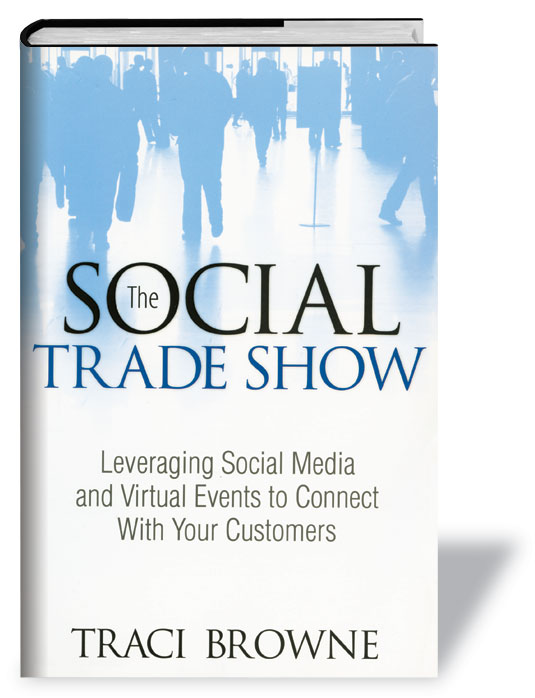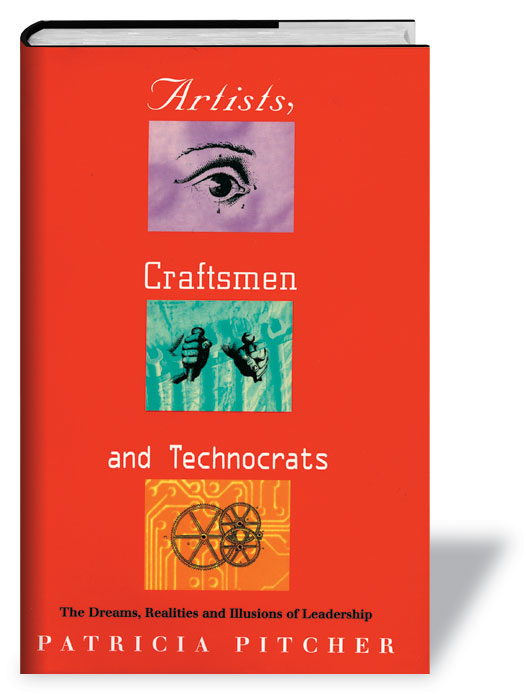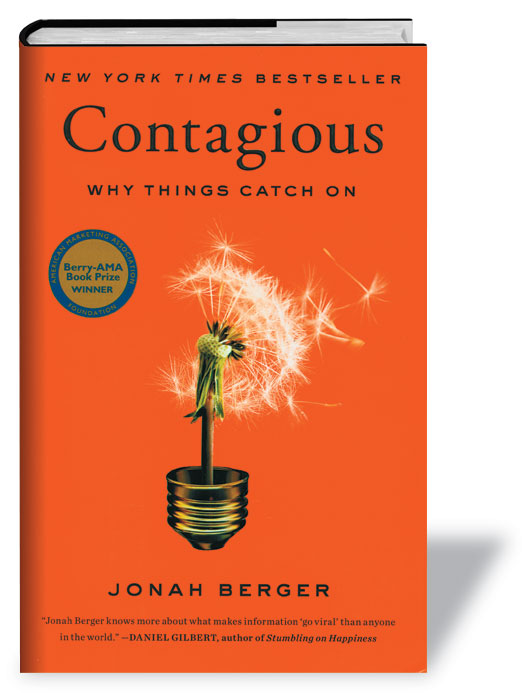|
education

"Today a reader, tomorrow a leader." This quote, often attributed to American journalist and women's rights advocate Margaret Fuller (but actually created by a student named W. Fusselman), is all the reason in the world you need to delve into this year's Summer Reading List. Featuring suggestions from our 2015 Editorial Advisory Board members, this compilation includes books that touch on everything from marketing concepts to straightforward exhibiting dos and don'ts. So whatever type of leader you're looking to become, you're sure to find inspiration within these varied tomes. Read on to see what books should be on your must-read list, and why our board members believe they're worth your time. By Lena Hewitt
 How to Get the Most Out of Trade Shows This must read for exhibit managers outlines tips for proper planning and management, effective execution and promotion, and maximizing your entire trade show investment. "How to Get the Most Out of Trade Shows" by Steve Miller provides meaty content in a simple, easy-to-follow format using real-world examples. Would you recommend this book for people new to the industry, or is it more tailored for experienced exhibit managers? I think everyone in the industry can learn something useful from it. And actually, my favorite section of the book speaks to both newbies and veterans: "Unfortunately, it's common for 'experienced' staffers to develop a negative attitude about the value of trade shows. 'We've got to be there, but it's a big waste of my time.' When these experienced staffers get a hold of a new worker, I call those people 'dogs with fleas.' When a dog with fleas comes in contact with a dog without fleas, soon you've got two dogs with fleas. And, without a doubt, a preconceived negative attitude about trade shows can seriously impact your ultimate results." I think most exhibit managers can agree with that notion. That's quite the comparison. Does the book teach you how to get rid of the fleas, so to speak? Yes it does. What's more, it doesn't simply addresses the often-overlooked hurdle to trade show success — which is thought to be out of our control — the book provides the rather simple solution. As exhibit managers, we can alleviate negative preconceived notions by presenting staffers' involvement as positive and beneficial to their personal and career goals. Why is a positive attitude so important in the grand scheme of things? Through reading "How to Get the Most Out of Trade Shows," I've learned that you can complete every checklist and fill in every form while coordinating a show, but until you understand exactly how you provide value and expertise to your team, internal clients, and external customers, you won't realize true trade show success.  Gale Portwine, CTSM, marketing specialist, Aon Affinity Insurance Services
Gale Portwine, CTSM, marketing specialist, Aon Affinity Insurance Services
 The Social Trade Show This book by Traci Browne puts social media in a trade show context and helps readers think outside the to overcome the growing void of attendee data. The book also provides an end-to-end look at the social-media, digital, and virtual platforms that can be employed in event- and exhibit-marketing programs. Why is this book a relevant read for marketers? According to Browne, many shows no longer allow exhibitors to rent their email lists. This situation is compounded at international events, where many shows still haven't gotten up to speed to preregister their attendees. Of the overseas shows that do preregister attendees, many can't release attendee data due to privacy issues. That means you have to pursue channels other than traditional email communication to convey your show-related messages. What made you decide to pick it up? After being away from social media for the past five years, I wanted a reintroduction to the medium. What I found most memorable was a passage in chapter five that defines social-media platforms (communication, collaboration, entertainment and education, and multimedia). With the many tools in the "Twitterverse," the book helped me to mentally segment the offerings and identify the ones I could use to implement a digital-communication program. What makes "The Social Trade Show" beneficial for exhibit and event managers? The book points out that you are not bound to the promotional packages offered by show producers. On the contrary, with creativity, you can work around standard offerings by using tools readily available to anyone. By taking the initiative to acquaint yourself with various digital tools on the Internet — many of which don't cost a dime — you can sidestep the roadblocks faced when trying to reach potential customers. Most importantly, Browne emphasizes that you need to plan for the before, during, and after elements of the trade show when creating your social-media communications plan. She writes, "If it can't be measured, it cannot be determined whether it's a success or a failure." I agree 100 percent.  Terrence Young, marketing programs manager, Pyrotek Inc.
Terrence Young, marketing programs manager, Pyrotek Inc.
 The Edge This book examines how the leading brands of today maintain their dominance in the market. The author, Allen P. Adamson, uses fascinating interviews and case studies to closely examine the challenges facing today's biggest brands. The book covers a wide array of brands, from major companies such as Apple Inc. and General Mills Inc. to celebrity brands like those created by Lady Gaga and Jay Z. What drew you into "The Edge"? I received the book from a colleague at my previous firm. We were going through a rebranding and examining the best ways to move forward into the market. I was engaged with "The Edge" from the beginning. The concept of a brand was defined and it reinforced how hard, yet effective, it can be to have all initiatives working together to create a completely cohesive experience. The concept was simple: Brand and branding are not the same. Brand is what the name represents to people, what they think or feel when they hear it. Branding is the process of how this thought or emotion gets into someone's head. And only an elite number of companies, which happen to also be the most successful companies in the world, know exactly what kind of branding best expresses their meaning, and where and how to spend their marketing dollars. How does it translate to trade shows and events? While it's not specifically targeted toward the exhibit industry, "The Edge" provides insights into these elite companies, including what they accomplished and how they did it. It really got me thinking about how to incorporate those best practices into my own marketing plan for exhibits and events. Why is corporate branding so important? I believe every successful firm needs a strong brand. It is critical to know how to use branding initiatives to get people to think about your brand in the precise way you want them to. And when planning these initiatives, you have to gear up for a marathon, not a sprint. Brands aren't created overnight.  Kimberly Greenberg, CTSM, director of marketing, ETF Securities
Kimberly Greenberg, CTSM, director of marketing, ETF Securities
 Social Customer Experience If you're looking for a social-media textbook, "Social Customer Experience: Engage and Retain Customers Through Social Media" is it. Written by Dave Evans and Joe Cothrel, it contains insightful examples and illustrations intended to help you craft an engaging social-media campaign for your next trade show. What do you like most about this book? The format appealed to me because as a baby boomer, I needed a straightforward approach to social media to get up to speed (or at least as current as one can be with these constantly changing mediums). And at the end of each chapter, the authors present key takeaways as well as sections titled "Hands-On: Apply What You've Learned" that are full of applicable examples. It's set up just like a textbook, and I really enjoyed the practicality of the it. The user-friendly format effectively covers the what, how, and why of the subject matter. So did it do the trick and bring you up to speed? I would say so. I'm on a team identifying and planning social media for an upcoming conference. I participated in several social-media conference calls over the last few months and I knew the terminology and all the ins and outs of the different platforms. I knew enough to be a part of the conversation. And while attending the various social-media sessions at EXHIBITORLIVE helped me learn about new trends, reading this book and having the time to really digest the content helped me become more educated, knowledgeable, and participatory. After reading the book, what's your understanding of social media? I would have to say that it is about engagement, and as an exhibit manager, it really is our business. There is much more beyond face-to-face exhibiting that can be leveraged before, during, and after trade shows. And while exhibit managers like myself often rely on third-party vendors and internal partners as the so-called subject-matter experts, you can really learn a lot if you just invest some time in reading.  Kathleen Gunderson, CTSM, assistant vice president, events project manager, Wells Fargo Home Mortgage
Kathleen Gunderson, CTSM, assistant vice president, events project manager, Wells Fargo Home Mortgage
 Marketing: A Love Story If you think it's odd to connect marketing with love, you're in the writer's company. That's because the first line on page one of "Marketing: A Love Story" by Bernadette Jiwa is "What's love got to do with it?" Jiwa goes on to explain that marketing in today's world is about winning brand loyalty by listening to customers, showing them they matter, and making sure they know that you care about them. Why should exhibit managers read this book? This book will help you look at everything you do through the eyes of your customers, whether they're internal clients in the office, your team and/or colleagues, attendees at a trade show, or even your own family members. And whether you realize it or not, you're marketing yourself every day. Can you expand on that idea of marketing yourself? Every day, every conversation is an interview, whether you want the next exciting project, the next job, a new friend, or love in your life. Every day you are building your personal brand. As such, every day you are marketing yourself. Think about how you want people to feel about you, about your product(s), and about your company. "Marketing: A Love Story" will help you think about those things from the perspective of your customers and prospects. As Jiwa wrote, "A great brand is something we want to belong to." That's a really powerful statement. Which section of the book would you dog-ear for a colleague to read? One of the most valuable gems in this book is what the author calls the Value Proposition Hack, which teaches you to explain the value of your idea in one sentence. It's a simple fill-in-the-blanks exercise, which can be refined if desired: "We do ____________ so that you can do/feel/be _______________." And "We created ____________ so you don't have to do/feel/be ____________." Wow! Forget product features and benefits statements. Think about how you want your customers to feel, because as Jiwa explains, "Marketing is a transfer of emotion. We buy with our hearts and justify decisions with our heads."  Diane Benson, CTSM Americas exhibits leader, GE Healthcare
Diane Benson, CTSM Americas exhibits leader, GE Healthcare
 Artists, Craftsmen and Technocrats Author Patricia Pitcher originally wrote "Artists, Craftsmen and Technocrats" as her doctorate dissertation. Seeking to discover why, exactly, certain companies fail while others flourish, she conducted an analysis of a Fortune 500 company's management team and identified three main personality types. This book explains those types and what it means to work for someone within each of the three categories. What are the three different personality types identified by Pitcher? They are the artist, the craftsman, and the technocrat. The artist is a visionary and someone with drive, ambition, and a clear plan on how to create success. The craftsman's role is to nurture the artist and turn his or her vision into reality. The technocrat is unbending and unwilling to change the rules, even in the face of helping the organization for which he or she works. Pitcher argues that technocrats within the management team spell disaster for the company because they are unwilling to see how their inability to change negatively impacts those around them and the organization itself. How has that knowledge personally benefitted you? As a psychology major, I love business books that identify personality traits and use them as a means to drive certain initiatives or foster success. I work within a fairly large team and manage someone myself, and I find it's crucial to identify these traits or types in my colleagues. This in turn allows me to be more successful as a manager since I now know how to relate to the people around me and position myself in a way that ensures success not only for the events program, but also for the company's marketing program as a whole. Who should read this book? I recommend this book to anyone who wants to gain a better understanding of the impact people have on the success or failure of organizations. This book is also a testament to encourage more artist behavior while being wary of the technocrat. We all have a role to play within our organization, and if we can identify which type we are and what types our colleagues are, we are much better equipped to be successful in the long run.  Erica Deri, events marketing manager, Genetec
Erica Deri, events marketing manager, Genetec
 Trade Show Survival Guide Unlike many other exhibit-marketing handbooks and guides available that cover pre-show and post-show logistics, "Trade Show Survival Guide" by Matt Hill is about surviving the show itself. Complete with everything from booth-staff training tips to advice on incorporating theater presentations, the book features worksheets, quizzes, and illustrations to present content in a digestible format. What makes this a can't-miss exhibit-marketing resource? The book is filled with tips and tricks on working a trade show and dealing with every type of attendee. The best part is that everything is presented in a humorous and understandable way. The book is a perfect tool for securing buy-in from sales staff on best practices to optimize every show. It also functions as a guide for planning your show, from demos to giveaways, and provides the insight needed to understand how to best support the staff working the booth. Where did you come across the book? I was given the book by the author during his session at EXHIBITORLIVE. I explained to him that I was trying to work with an Excel database as a means to organize my exhibit program. He said I really needed this book, and he was right. Were you able to put what you read to use right away? There is a chapter that focuses on how to manage visitors to the booth and move along quickly from unqualified leads or complete time wasters. This was an eye-opener because I, like a lot of booth staffers, have been trapped in conversations with unqualified attendees many times with no hope of escape. This section was so effective that when I shared the tips with my sales staff, they began using them immediately with great success. What's the primary takeaway? We can get so involved in logistics that we sometimes forget it's how we work the show that really matters. There are salespeople who hate working trade shows, and it's really because they don't know how to make the show work for them. This book spurred the epiphany my team needed to really start training our staff.  Brandon Wiltshire, CTSM, marketing event manager and communications, All Weather Windows
Brandon Wiltshire, CTSM, marketing event manager and communications, All Weather Windows
 Contagious Written by Jonah Berger, "Contagious: Why Things Catch On" is about understanding what you can do as a marketer or exhibit manager to create contagious content and brand recognition. The book brings up numerous examples of real-world products or movements that became contagious, and dissects the reasons why. It leaves you with actionable steps to consider when you want to create something contagious for your program. How did you discover the book? Our department head ordered copies for the entire marketing team after reading the book himself. Everyone in marketing should be continuously thinking of new ways to make products stand out. This is a great book to spark ideas or reference during a brainstorming session. Bonus: It is available on iTunes. For the busy event manager, listening to portions of the book on the way to work each day is a great way to enter the workplace already thinking of new ideas. Why would you recommend this book to our readers? I recommend this book to any exhibit and/or event manager because it's his or her top priority to evolve exhibits and find new ways to stand out among the hundreds of other exhibitors at trade shows. Knowing what makes a giveaway, activity, or booth sharable, or contagious, at a show will maximize return on investment. Reading this book before conducting your next brainstorming session will help you lead your team to produce effective ideas. Has this book significantly helped you in your role as an exhibit manager? Yes. When brainstorming our most recent campaign, knowing that emotional content can be one of the main reasons something is sharable led us to create an entire integrated marketing campaign around our clients' "bold" stories. The hope was that it would inspire clients and prospects when they visited our booth, and leave them with an experience they wanted to share with others. The campaign has been successful (we won an EXHIBITOR All-Star Award for it), and it's running at all of our events for its second year.  Noelle Luchino Feist, director of experiential and event marketing, Mindbody Inc.
Noelle Luchino Feist, director of experiential and event marketing, Mindbody Inc.
|
|
|
||||||||||||||||||||||||||||
|
|
||||||||||||||||||||||||||||
|
TOPICS Measurement & Budgeting Planning & Execution Marketing & Promotion Events & Venues Personal & Career Exhibits & Experiences International Exhibiting Resources for Rookies Research & Resources |
MAGAZINE Subscribe Today! Renew Subscription Update Address Digital Downloads Newsletters Advertise |
FIND IT Exhibit & Display Producers Products & Services All Companies Get Listed |
EXHIBITORLIVE Sessions Certification Exhibit Hall Exhibit at the Show Registration |
ETRAK Sessions Certification F.A.Q. Registration |
EDUCATION WEEK Overview Sessions Hotel Registration |
CERTIFICATION The Program Steps to Certification Faculty and Staff Enroll in CTSM Submit Quiz Answers My CTSM |
AWARDS Sizzle Awards Exhibit Design Awards Portable/Modular Awards Corporate Event Awards Centers of Excellence |
NEWS Associations/Press Awards Company News International New Products People Shows & Events Venues & Destinations EXHIBITOR News |
||||||||||||||||||||
|
||||||||||||||||||||||||||||






